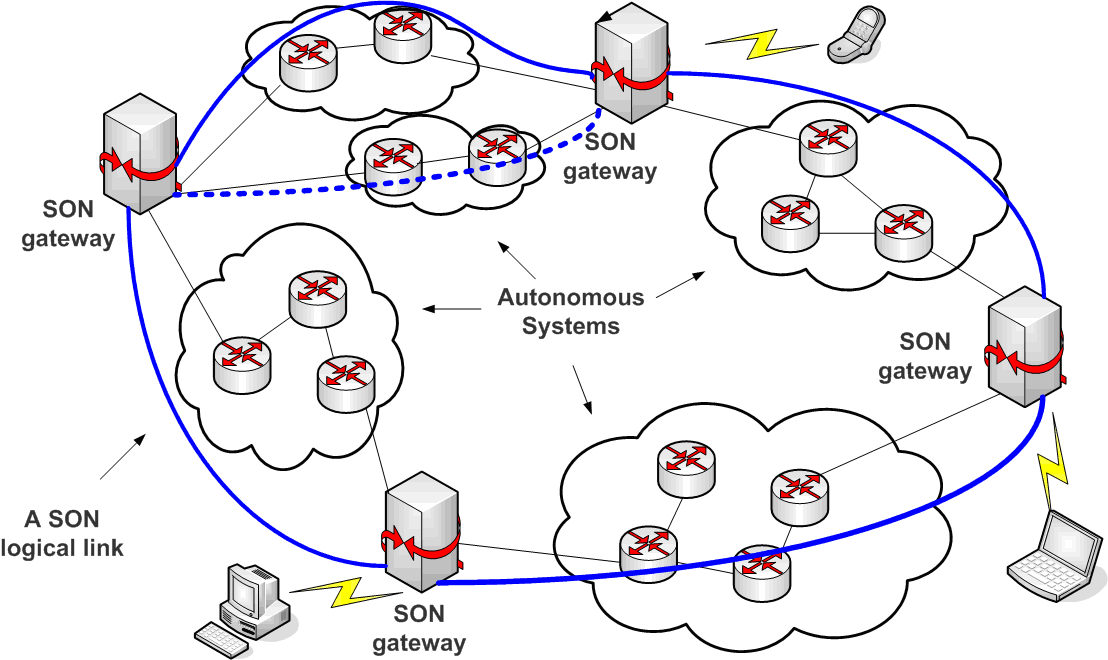| |
Researchers: Ngok Lam, Ph.D. Student & Prof. Lorne Mason
Description:
THE Internet primarily provides best-effort delivery for the data. It does not attempt to differentiate the data nor provide a QoS guarantee to the data. Combining this with the fact that the Internet consists of a collection of independent autonomous systems (ASes), there is a good reason why offering end-to-end quality of service (QoS) guarantees in the pure Internet setting is difficult. Though protocols like DiffServ have been proposed to offer differentiated QoS in the Internet, the presence of independent autonomous systems still makes it difficult to offer end-to-end QoS guarantees across the Internet, as this requires the establishment of multi-lateral business relationships with all the independent ASes the traffic would traverse.
It is under that background that Service Overlay Networks, (SON)s, were put forward in the hope of addressing this difficulty. A Service Overlay Network (SON) is a logical network formed on the top of the physical Internet that spans through different autonomous systems. A SON operates in the same way as a Virtual Network, the SON operator owns the SON gateways which are placed in strategic locations. A SON operator leases bandwidths with QoS guarantees from the underlying ASes, usually in the form of Service Level Agreements (SLAs). These bandwidths provide logical connections in the overlay network. Once the bandwidths are in place, the SON is realized and is ready to offer end-to-end QoS guarantees for the value-added services it provides (i.e. VoIP, Video On Demand services, etc). The SON connections are classified by the source and the destination gateways. Users with access to the Internet can access the service gateways and use the value-added services. the following figure shows an example of SON network.

In order to deploy a SON, the optimal amount of bandwidth to be leased for each of the logical links is a major challenge faced by the SON operator. From the operator point of view, the bandwidth allocated should provide the maximum economic benefit yet meet the user expectation regarding the connection acceptance ratio. This ratio is also known as the Grade of Service requirements (GoS). So the problem confronting the SON operator is: Given a set of SON gateways, what are the optimal bandwidths to lease for the logical links if the traffic intensities between the SON gateway pairs are known and the GoS requirements are given. This is also the question we address in this article. To facilitate the study, we shall consider the SON networks as generic networks, and the SON gateways as generic networking nodes. The objective is to solve the optimal bandwidth allocation problem of the generic networks.
Publications:
N. Lam, Z. Dziong and L.G. Mason, Optimization Approaches for Service Overlay Network Capacity Allocation, Submitted
[Paper (pdf format)]
|



